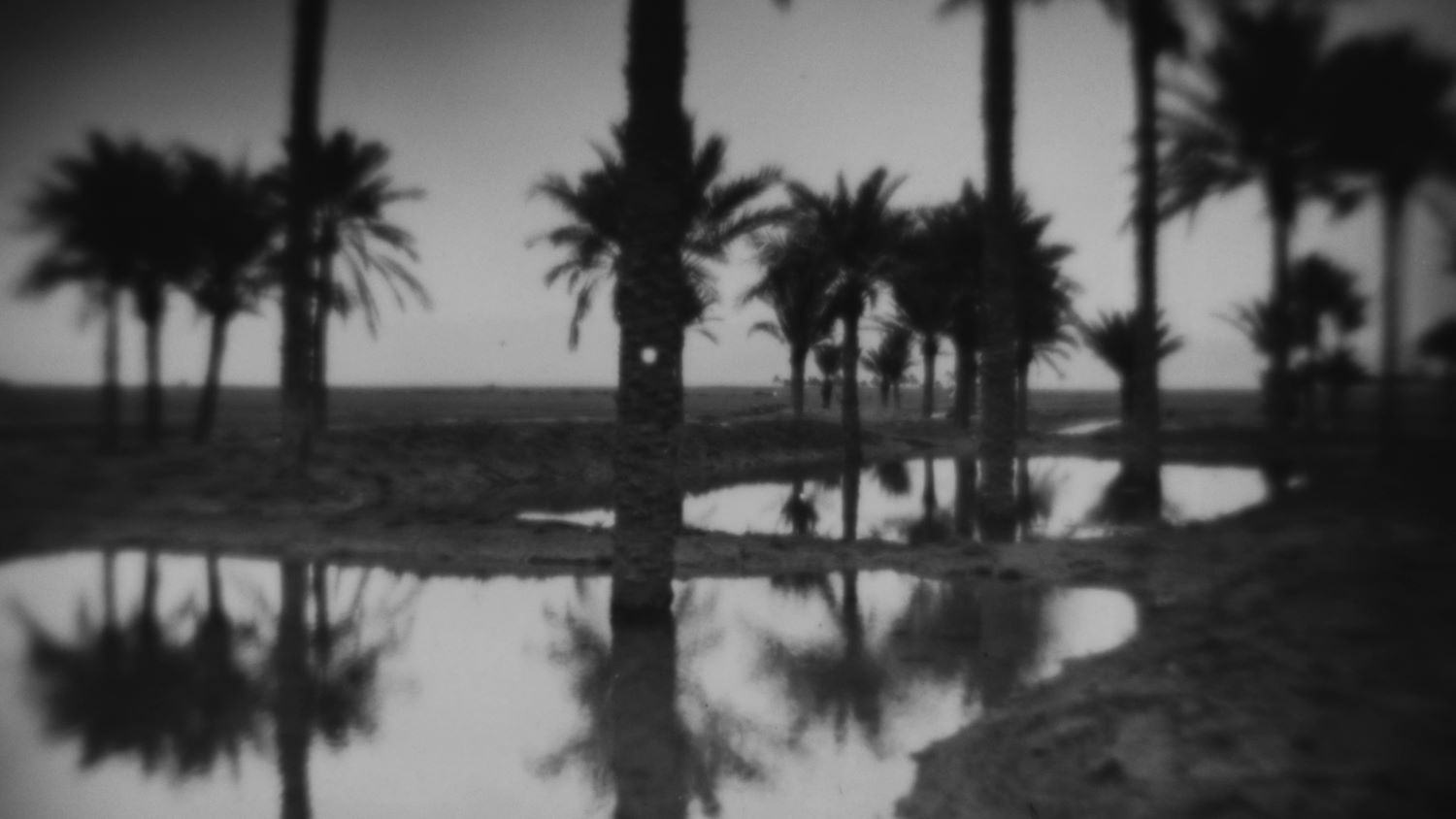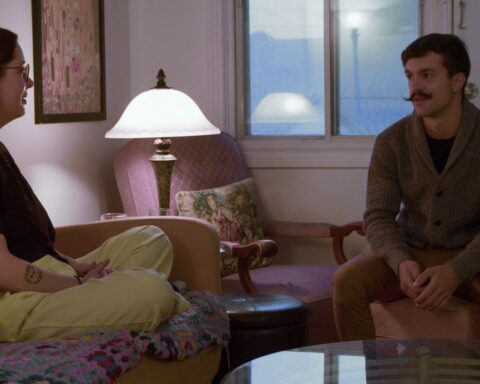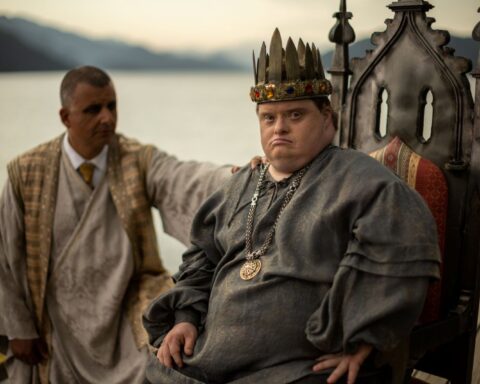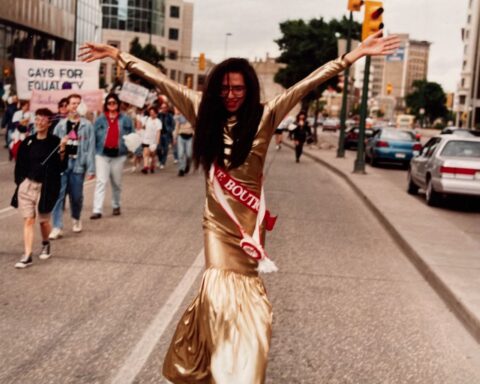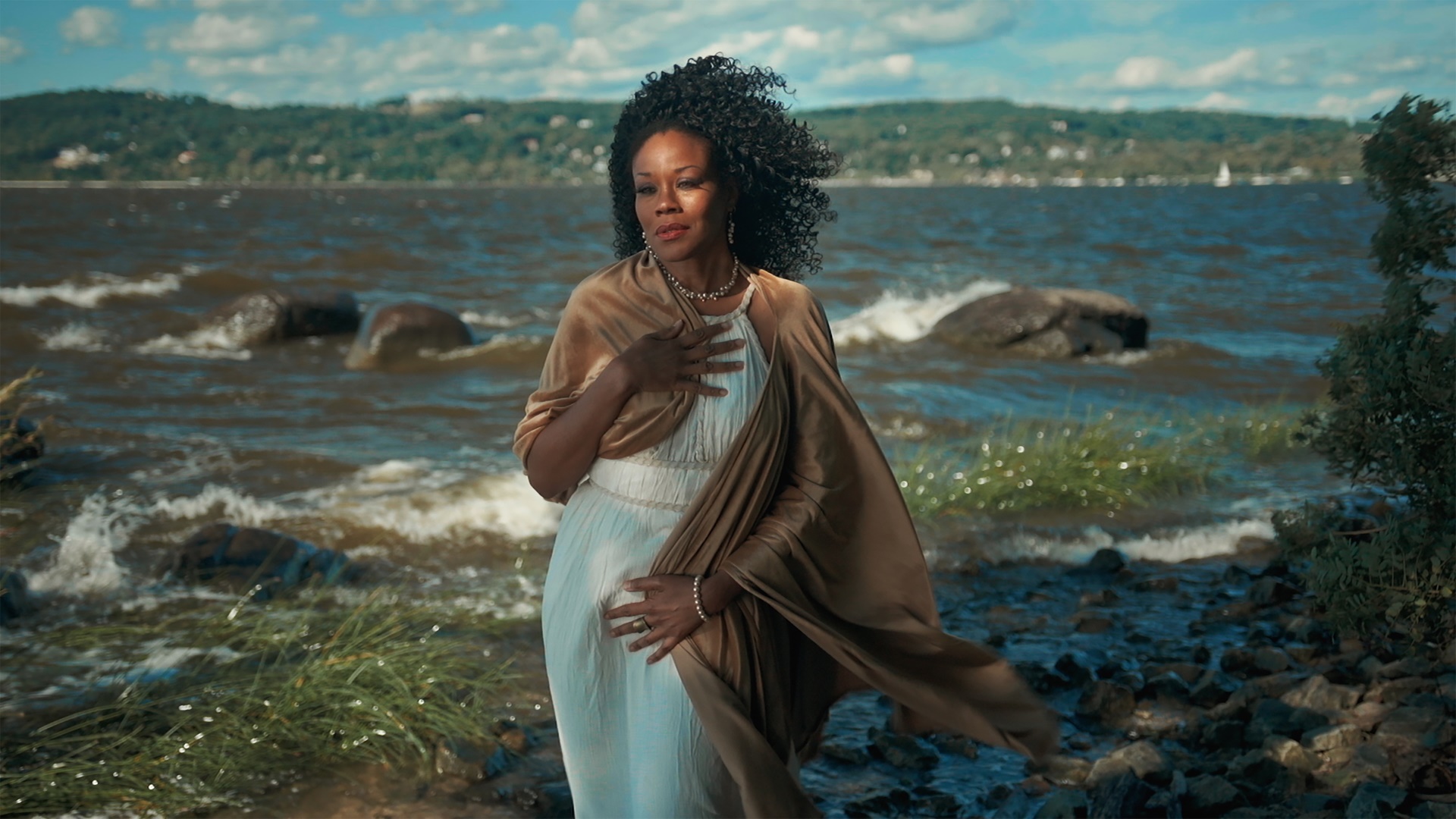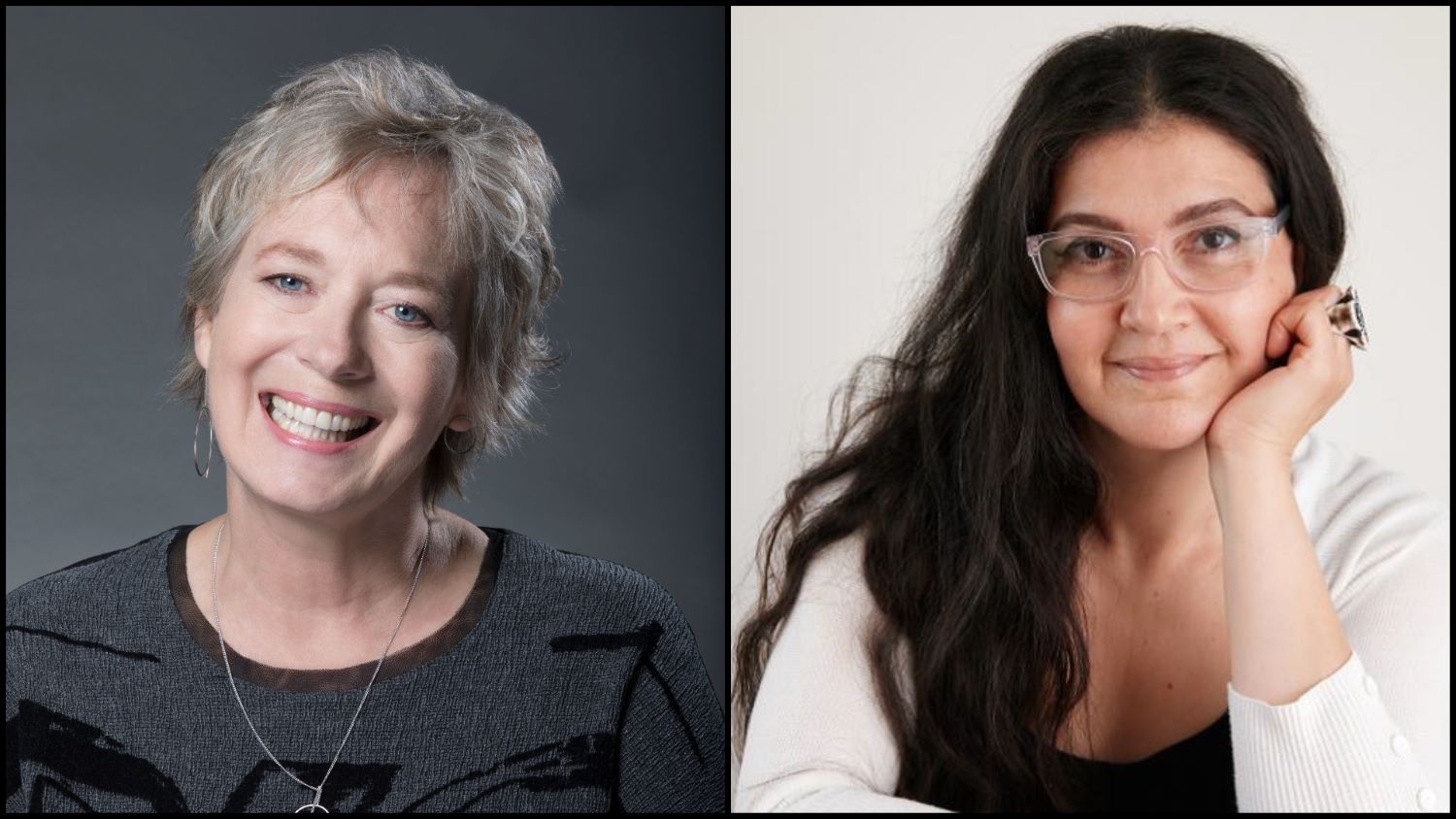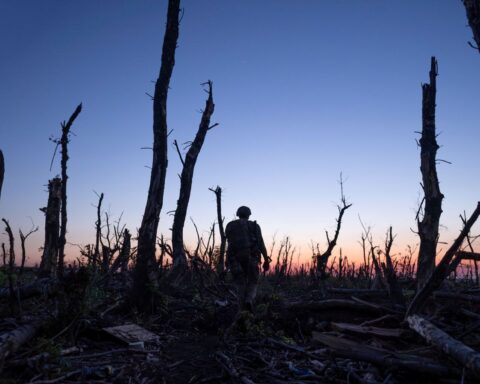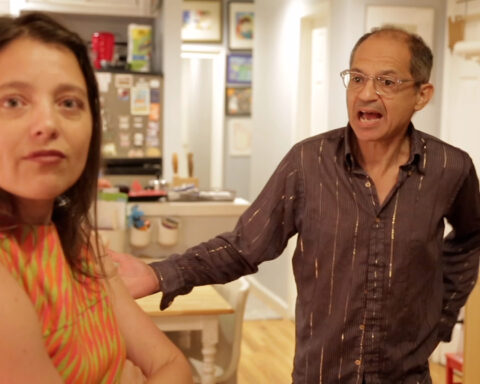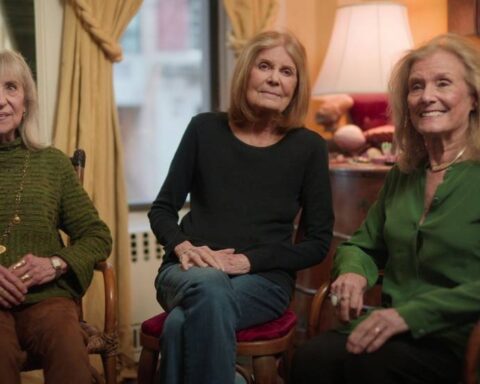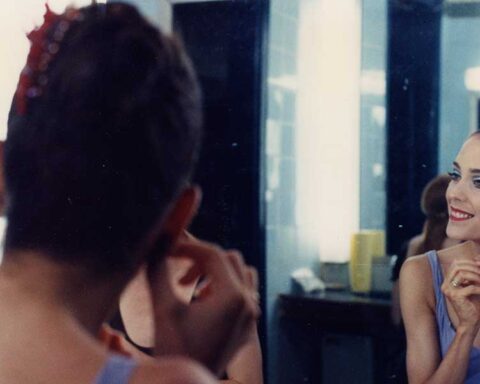The Coachella Valley is a land of contradictions, replete with mystery, toxicity, folk tales, and terrifying beauty. Set in the California desert, the valley is famous for its date-palm tree farms amid a growing network of golfing communities and residences for America’s aging wealthy. The farmers, mainly of Mexican origin, and golfers, overwhelmingly white and privileged, co-exist with the Cahuilla Indigenous people, who are exploring their own roots while gradually growing in influence. Barely visible to each other, they all inhabit a land dominated by the San Andreas Fault, where two tectonic plates are forcing deeply buried water to the surface and forming oases until the inevitable disaster occurs, when powerful earthquakes will devastate the region.
Terra Long’s immersive, quirky film Feet in Water, Head on Fire offers a deliberately imperfect rendering of the fractured realities in Coachella. Even her title is idiosyncratic: It supposedly comes from an ancient Arab proverb about the oases in North Africa, where dates thrived when an upward shelf of water nurtured palms to grow with their “heads in the fire in the sky.” But Long’s researcher Hannah Shepard looked diligently for the source of the adage and couldn’t find it anywhere. That dovetails with the false mythology that has been used to market Coachella’s dates for the past century. By placing an Arabian Nights theme around the selling of locally sourced dates since the time of Rudolph Valentino’s 1921 sex-and-sandals hit The Sheik, the valley has become famous and palm trees have become an important part of California pop culture.
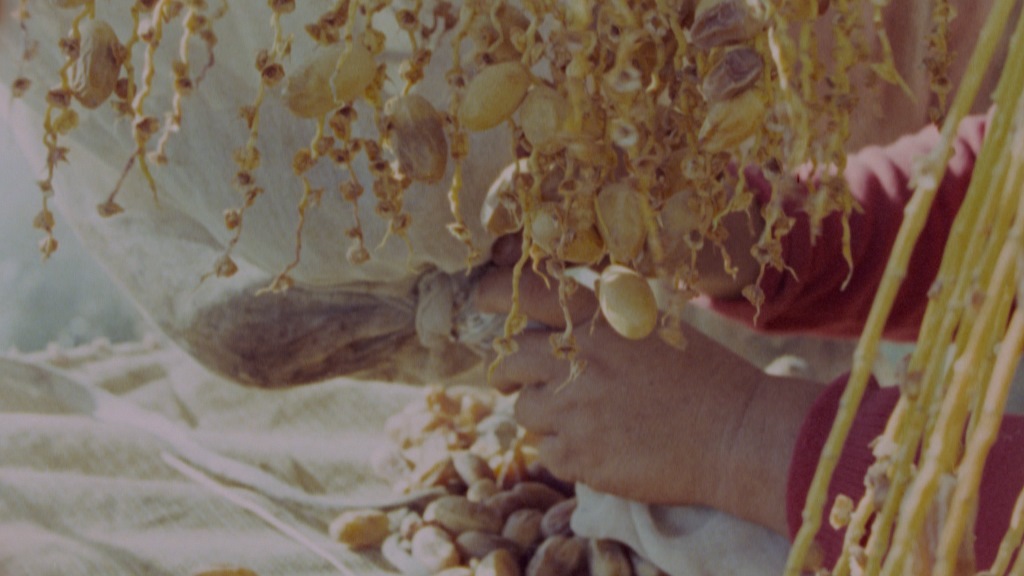
One of Long’s set pieces offers a garish look into Coachella’s oddly Arabian version of Americana. We see a parade led by a brass band and cheerleaders march down the appropriately named Mecca, California, while locals cheer them on. It’s all very upbeat but with an orientalist approach, which is so false that it’s charming. The camera dwells more on the parade than the citizenry, but we do see old-fashioned Middle Eastern-style costumes at the event. The parade, which mixes Aladdin with Scheherazade, has helped to promote the marketing of such California dates as Medjools and Barhis for an industry that produced 59,450 tons of dates worth more than $228 million USD in 2021.
Long adds complexity to what could be a satirical scene by having a young girl tell the Scheherazade story imperfectly while a Mexican grandmother cheers on the dancers, calling them beautiful “muchachas.” The slightly incoherent rendering of the Persian tale underscores the director’s interest in orality. She deliberately eschewed a classic essay approach with “talking heads” experts. Long explained to POV, “I decided to make a film about the people who have an immediate relationship with palm trees, and bring it forth through their oral histories…I wanted to hear how stories are passed on from generation to generation.”
The Mexican American grandmother, Yolanda Moreno, who passionately supports the young Hispanic cheerleaders and band members, runs a local gift shop, where we see the local mothers and daughters come to buy clothes and jewelry. Long worked collaboratively with Daniela Uribe, Moreno’s granddaughter, on the film, helping give the film authenticity through her insight into the Spanish-speaking community in the valley. Through Uribe, she travels to the Bautista Farm, one of the last truly local farms, where we see harvesting taking place while the family elder reminisces to Long about how his love for the palms has motivated him to keep growing dates.

From the Hispanic farmers, the film pirouettes to gaze at the other communities, the Indigenous and white settlers. At the Malki museum dedicated to Cahuilla history, Long encounters Aaron Saubel, whose grandmother Katherine was an acclaimed writer and a highly respected ethnobotanist. It was Katherine who started the museum and sparked the modern revival of local Indigenous culture. Like Daniela, Aaron speaks with love and respect for his grandmother, and this regard for elders flows throughout the film.
The golfing community is presented with humour and tenderness by the director, who spends time with a couple, the Wangs, whose long marriage has evolved into an affectionate set of bantering complaints. Whether golfing or swimming in the pool, they have fun with each other’s foibles and it’s evident that they’re playing to the camera, operated by Long, who is related to them. She admits, with a shrug, that they are her “elders.”
What we don’t see is any political analysis of how the Wangs and so many other wealthy retirees ended up in the valley. We know that they made money—a lot of it—somehow, and are now golfing, swimming in pools, drinking, playing cards. The local Hispanics, in vast numbers, are employed by them in every manner of service work from cleaning to cooking to maintaining the grounds in the exclusive compounds. Long avoids attacking anyone in the film—it’s one of her strengths—and yet one can’t help thinking about the environmental cost of the green, manicured golf courses and beautifully designed pools.
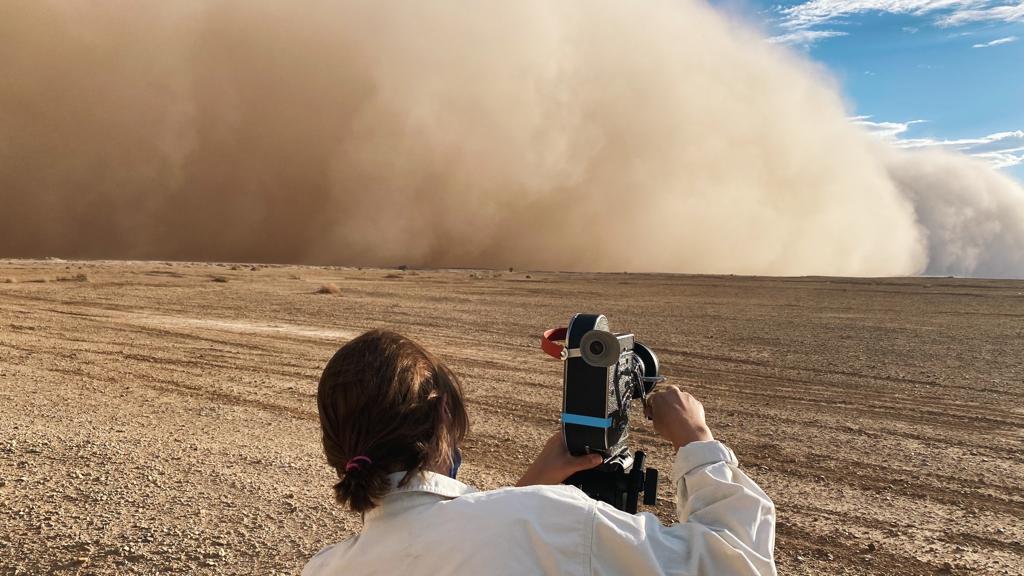
Ecology isn’t exactly avoided in the film, but let’s say that it’s not Long’s focus. The Salton Sea, which is a notorious part of the region, is the primary point of interest and it’s one that Long only partially addresses. Deliberately created by canals that run from the Colorado River, the Sea is an artificial construction that was for a time—mainly the post-World War II boom years—an immense tourist attraction, acclaimed for its birds and fishes. But as the Sea began to dry up, much of the wildlife died off rather gruesomely and the Salton turned into a toxic environment.
Long presents the Sea, occupied by white scientists and government officials, as a site of tension and danger. For Daniela’s grandmother Yolanda, the Salton is an area to be avoided because too many Hispanics without proper immigration papers are captured there and subsequently deported. Long intended to have Daniela speak about the Sea, but a sequence they wanted to shoot there was curtailed because of a huge thunderstorm, which shut down activity in the area. Fortuitously, Long showed her documentary instinct, shooting the terrifying storm as it hit her car while drenching the road around her. It’s a bravura sequence in the film.
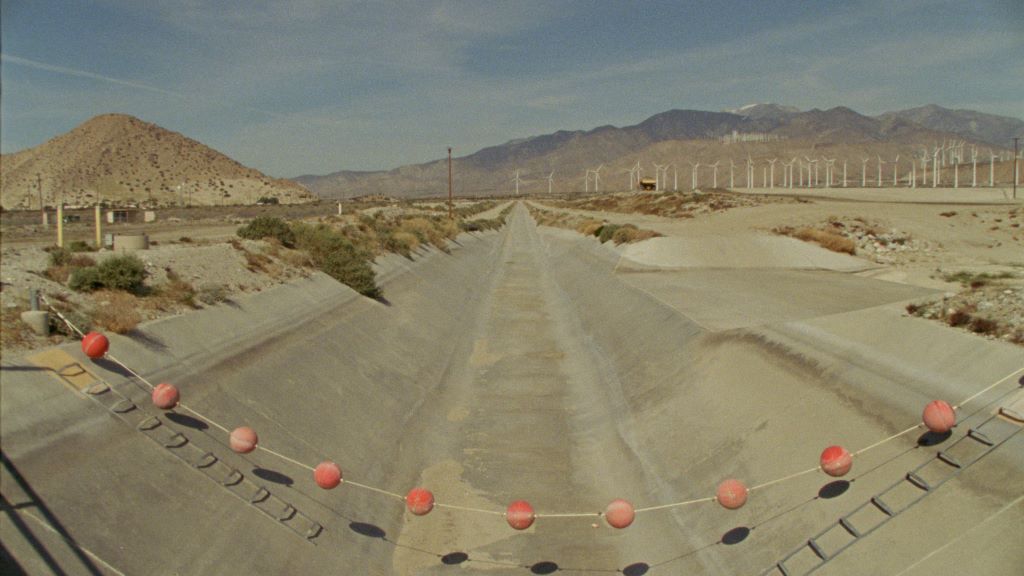
It would be quite unfair to accuse Long of not being ecologically conscious. Her film is hand-processed with date palm, white sage, wild grape, Mojave yucca, California fan palm, and sage brush. Not only did she avoid the health-threatening chemicals regularly used to process film, Long found poetic aspects in her approach. “It gives you such a different relationship to the land you’re in,” she points out. “You get to know the plants around you and the people who are growing them.”
Long first began to use natural elements in film production while doing a residency in Morocco. “I wanted to hand-process and didn’t want to bring chemicals into a region that is so deeply tied to the landscape,” she commented. “I wanted to leave as little a trace as possible. So, I decided I’d do eco-processing there. Dates are really high in phenolic acids [a type of chemical used in film development]. My first big foray into hand-processing was during harvest time in a date oasis. The results were so beautiful and effective.”
Feet in Water, Head on Fire is, in my estimation, part of a new wave of filmmaking that is breaking barriers in documentary cinema. The approach of directors like Jacquelyn Mills and Lina Rodriguez is equally emotional, instinctual, and poetic. It may be unsurprising that all three are women, since today’s risk takers so often are. In any case, Terra Long has now shown her capabilities and ambition. She’s made a documentary that resists the standard form and prospers on its own terms. Such acts of formalist rebellion could have worked against her, but it’s my prediction that most viewers will enjoy and support this unique film.




